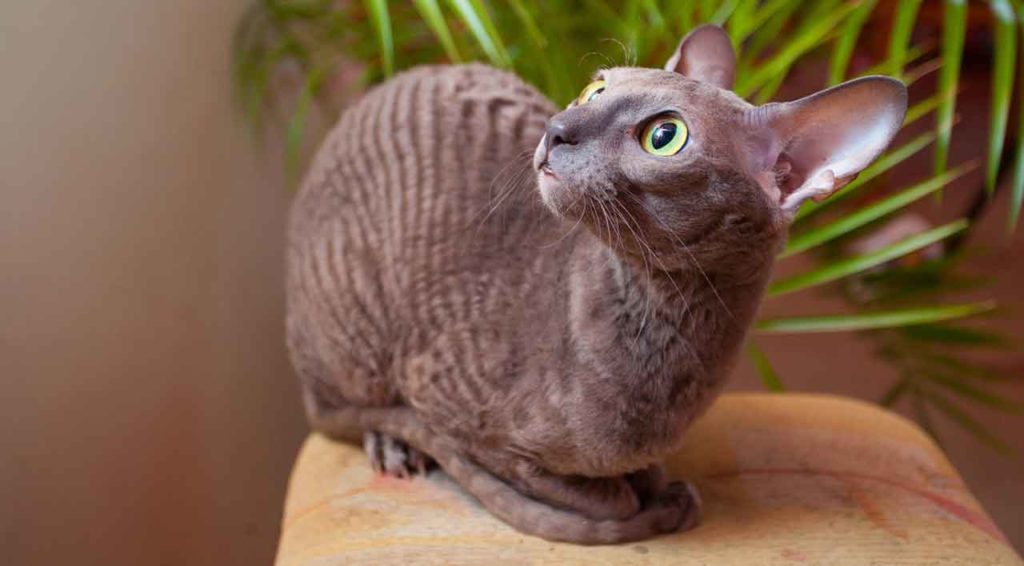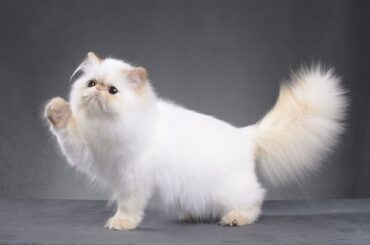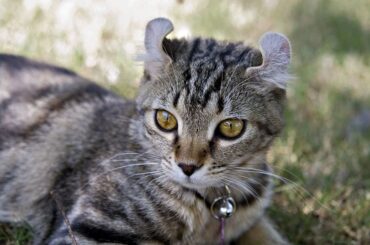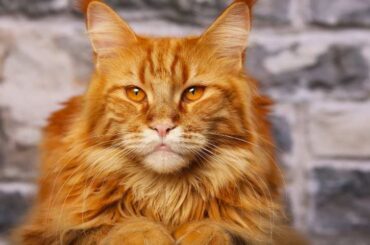Cornwall is the name of a cat breed that originated in England in the 1950s. When a genetic mutation resulted in a kitten with an abnormally curly coat and a peculiar long-limbed body structure, the Cornish Rex Cat Breed was born.
The first Cornish Rex was a cream-colored male named Kallibunker, who had an exceptionally remarkable fine and curly coat. Kallibunker was subsequently backcrossed to his mother, resulting in two more curly-coated kittens for the owner. Poldhu, the male, sired Lamorna Cove, a female who was later brought to America and bred with a Siamese, giving the breed its long whippy tails and large ears.
The Devon Rex resembles the Cornish Rex in appearance, however, it has protection hairs and sheds. The Devon Rex mutation differs from the Cornish Rex mutation in that Devon’s guard hairs are shorter, whereas the Cornish Rex’s guard hairs are completely absent.

Crosses between Devon and Cornish Rexes are not allowed in pedigrees, and matings between them do not result in a cat with short wavy fur. A pair of Cornish Rex cats were introduced to the United States in 1957, while the breed was still in its infancy. This was fortunate because Kallibunker and his descendants nearly vanished from England in the late 1950s.
Crossbreeding with American Shorthair, Havana Brown, and other cats in the United States helped to preserve the breed, which is now known for its sociable personality and adorable antics. The Cat Fanciers’ Association recognized the Cornish Rex as an official breed in 1964.
Because of the breed’s Cornish origins and resemblance to the Astrex rabbit, the name Cornish Rex was chosen for the new breed. Fran Blancheri, a fancier, brought two Cornish Rexes to North America in 1957. The Cornish Rex was accepted for the championship by the CFA in 1964, and it is now accepted by all North American registries. The Cornish Rex is also accepted by the Governing Council of the Cat Fancy (GCCF) and the Fédération Internationale Féline (FIFe) in Europe.
Table of Contents
Cornish Rex Cat Breed Body Structure
The body size ranges from small to medium. Long, thin torso with a deep, but not the large, chest. When the cat is standing naturally, the Cornish Rex Cat Breed back is naturally arched. The waistline is formed by the underline softly curving upward from the ribcage. The head is egg-shaped and quite tiny. The length is about a third of the width.
There’s a distinct break in the whiskers. The muzzle narrows somewhat before coming to a rounded finish. The cheekbones are prominent and high. Strong, well-developed chin. From the base, the ears are large and full, erect and alert, and situated high on the head. The eyes are blue, green, blue-green, or gold in color and range in size from medium to large. Weight is 18 inches long and length is 6-10 pounds.

Apart from down, the Cornish Rex has no hair. The outer fur or “guard hairs,” a middle layer termed “awn hair,” and the down hair or undercoat, which is very fine and roughly 1 cm long, are found in the coats of most cat breeds. Only the undercoat is present in Cornish Rexes. They are vulnerable to hair loss, with many acquiring a very thin coat or even going bald over vast areas of their bodies. Their fur curl is caused by a different mutation and gene than the Devon Rex’s.
Cornish Rex Cat Breed Behavior
Cornish Rexes are lively, curious, felines who enjoy a good giggle. They’re difficult to ignore when they’re in a friendly attitude, which is most of the time. When it comes to their favorite humans, Rexes are adamantly outgoing. They also make the ideal winter lap warmer due to their warm suede texture. They are usually easy to handle because they are intelligent, alert, and alert. Some Rexes enjoy recovering objects and will bring them back to you to toss over and over. They are excellent climbers, leapers, and sprinters, and their paws are incredibly agile.

Cornish Rex Cat Breed Health
These cats are mostly not susceptible to any particular health issues and can enjoy a long, happy life. Because of their fragile fur, they are especially susceptible to radiation. They can live for up to 16 years.
RECOMMENDED ARTICLES
- 13 Symptoms when Chocolate Be Eaten By Cats – Can Cats Eat Chocolate ׀ PetsWealth
- What Is Cat Flu? Symptoms, Causes, Treatment And Prevention
- Raas Cats Breed: Characteristics, Behaviour, Caring And Health
- The Russian Blue Cat: Characteristics, Behaviour And Health
- Ragdoll Cat Breed – 6 Comprehensive Body Description, Behaviour And Health
If you like, please share it. Sharing is usually caring.




